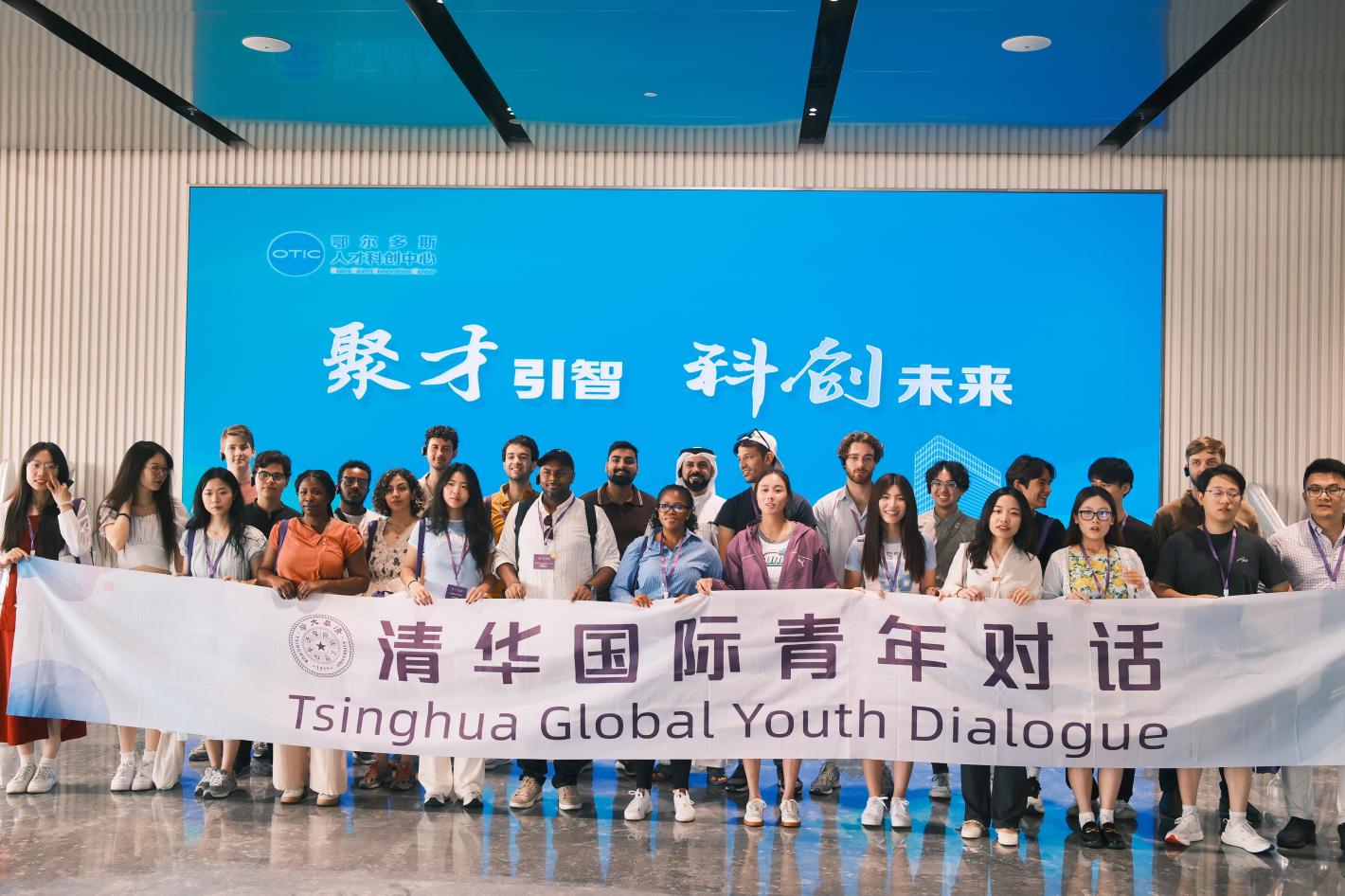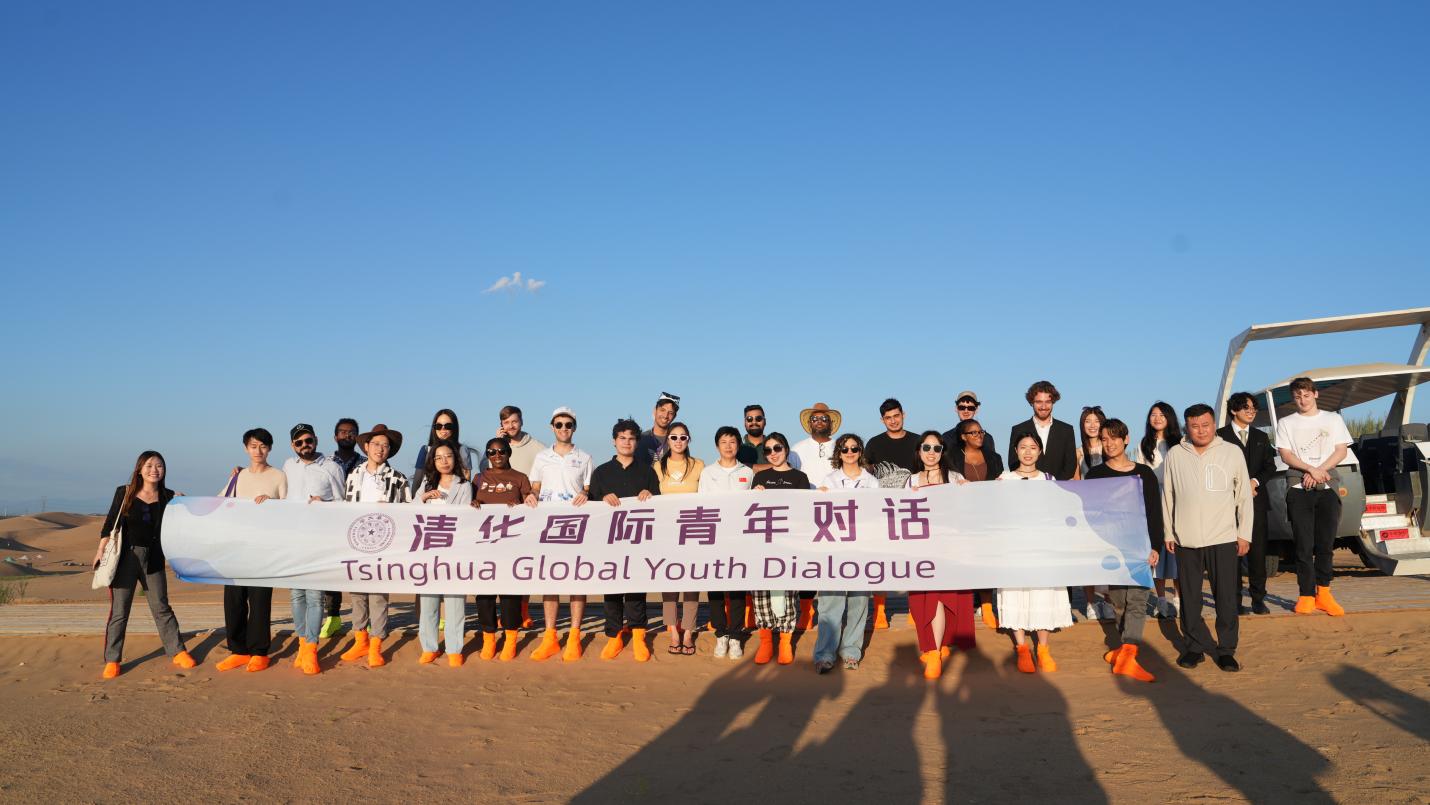The second Tsinghua Global Youth Dialogue (TGYD) kicked off in Shanghai on August 19. The immersive experience featured field trips to Zhejiang, Guizhou, Inner Mongolia, and other regions to increase understanding of China's state of development and future collaboration possibilities. Through in-depth excursions and exchanges, the youth representatives explored China’s achievements in globalization, technological innovation, environmental conservation, and cultural legacy. The event brought together 100 young leaders from 35 nations, with the goal of building a cross-border dialogue platform where global youth can foster connections and inspire others through mutual understanding and academic engagement. Youth representatives exhibited the spirit and responsibility of Chinese youth in the new era, building bridges for international cooperation, exchange, global peace, and development.
In Shanghai: Experience Globalization and Open Innovation
On August 19, young leaders from around the world set off on a four-day journey around Shanghai, spotting firsthand the city's spirit of openness, innovation, and limitless vitality.

During the site visits, the youth representatives explored companies like SEER Robotics and Bilibili, experiencing firsthand the innovative strength of Chinese tech firms and the vibrant growth of the cultural industry. SEER Robotics impressed the youth representatives with its advanced robotics technology, inspiring them to reflect on their future career paths. Meanwhile, Bilibili, with its unique video community ecosystem, allowed them to deeply appreciate the cultural confidence and innovative spirit of China’s younger generation. The representatives also visited automotive companies like NIO and SAIC General Motors Company Ltd., gaining a firsthand understanding of the rapid development of China's intelligent connected vehicles and the corporate culture of the automotive industry.

The youth representatives visited Greenland Global Commodity Trading Hub Group and Tesla Giga Shanghai (Gigafactory 3), where they experienced China’s leading position in international trade and smart manufacturing. During academic lectures and discussions at Fudan University and Shanghai Jiao Tong University, they engaged in lively exchanges on global issues such as youth leadership, climate change, and sustainable development, collectively exploring the role and mission of youth in global governance.
In Guizhou: Dialogues on Cultural Exchange and Eco-Humanism
Following their stint in Shanghai, the youth representatives explored Guizhou’s unique ethnic culture and natural ecology, immersing themselves in the local customs and traditions. Wearing traditional ethnic attire, they participated in a rural fashion show in Qiandongnan Miao and Dong Autonomous Prefecture, where the stunning and culturally rich garments were showcased on the “village red carpet.” Meanwhile, at the Confucius Academy, the representatives explored the teachings of Confucianism and experienced traditional Chinese culture through tea ceremonies, matcha tasting, tea art, and traditional Chinese painting on fans, gaining a deeper appreciation of China’s ancient and enduring cultural heritage.
At Huangguoshu Waterfall, the youth representatives admired the romantic scenery of the Shilihetan Station (river beach) and other natural wonders. The Guizhou locals warmly welcomed their guests with folk songs, traditional musical instruments, graceful dances, and heartfelt hospitality. In Rongjiang, they experienced the excitement of local sports events and the grand “Mountain and Flowing Water” banquet. At Xiulitao, they listened to ancient legends and marveled at the Miao and Dong embroideries, fully embracing the culture as they donned ceremonial sashes and medals.
The youth representatives attended the opening ceremony of the 2024 China-ASEAN Education Week, where they learned about the development and future prospects of the Guian New Area and sought new avenues for collaboration.
In Inner Mongolia: Experiencing Civilizational Progress and Green Transformation
As they set foot on the grassland of Inner Mongolia, the youth representatives witnessed the natural wonders of Ordos and engaged in discussions about the balance and symbiosis between ecological protection and modernization.

During the event, the youth representatives visited the Ordos Talent and Innovation Park and the Zero-Carbon Industrial Park, experiencing the vibrant energy of technological innovation and new energy industries. At the Cashmere Industrial Park, they observed the perfect fusion of tradition and modernity. Then, at the Salawusu Site, the representatives explored Inner Mongolia’s rich history. In Uxin Banner, they were impressed by Baofeng Coal-Based New Materials Company’s green industrial transformation, while the desert photovoltaic project in Dalate County showcased the integration of ecology and technology.
On August 26, the youth representatives participated in a dialogue with Ordos city leaders and local youth, discussing the future of technological innovation and industrial upgrading. After admiring the breathtaking desert landscapes, the representatives returned to Tsinghua University, bringing with them valuable experiences and inspiration, ready to share Inner Mongolia’s green development story with the world and contribute to the advancement of global sustainable development.

In Zhejiang: Advancing Cultural Innovation and Technological Integration
Traveling to Zhejiang, the youth representatives visited cities such as Jiaxing, Hangzhou, and Quzhou, witnessing the province’s cutting-edge technology and achievements in cultural innovation while appreciating the unique charm and rich cultural heritage of the representative “water towns” south of the Yangtze River.

The representatives visited various tech institutions and parks, including Xiangfudang Innovation Green Valley in Jiashan, the Yangtze Delta Region Institute of Tsinghua University, Zhejiang, Wuzhen Lab, MobiDrop, and Dahua Technology Co. Ltd., gaining insights into how science and technology are empowering the development of new productive forces. At Miao Family Village, they saw the practical application of China’s common prosperity philosophy, and in the ancient towns of Xitang and Wuzhen, they were immersed in the historical charm of traditional architecture and cultural ambiance.
At the Hangzhou Branch of the National Archives of Publications and Culture and the Liangzhu Museum, the youth representatives delved deeper into China’s rich cultural heritage and illustrious history. They also engaged in discussions with local students and teachers at Xuejun High School on new paths for educational development. In Quzhou, they toured the Doolittle Raid Memorial Hall, a testament to the enduring friendship between the Chinese and American peoples forged through the trials of war. A visit to the Confucian Temple provided the representatives with an immersive experience of Confucian culture, deepening their understanding of its historical legacy, core values, and philosophical ideas.

During their four-stop journey to Shanghai, Guizhou, Inner Mongolia, and Zhejiang, the youth representatives not only acknowledged an open, inventive, and diversified China, but also acquired an in-depth grasp of its rich traditional culture. The nine-day program supplied participants with an expanded understanding of China's development model and cultural heritage in the context of globalization, allowing them to anchor their viewpoints in China while conceiving a brighter global future. They will share their experiences in China with other international youths, promoting mutual trust and cooperation while also contributing to global cultural exchange and mutual learning.
On August 29, the representatives convened at Tsinghua University for a forum, with the goal of fostering unity among the youth, consolidating their efforts, and exploring new channels for global youth engagement and cooperation.
Editor: Li Han

